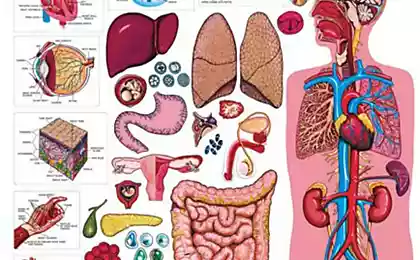1180
Villainous fate
Lareske Brown, 16-year-old schoolgirl from the UK, whose illness has helped her become a successful weight-lifter. Two years ago she was diagnosed with hypermobility syndrome joints. Illness brought her constant pain and was a great risk of dislocation of the joint. But she did not give up and took up weightlifting, which helped her not only to cope with the pain, but also to become the strongest schoolgirl UK. From childhood Lareske had health problems. Her toes and knees were turned inward, that is a form of clubfoot. Typically, this condition in children passes and does not require further treatment. Also, doctors diagnosed the girl hypermobility, which means a greater range of motion in the joints, than the average person. This disease can cause severe pain in the joints and lead to dislocation.

Despite its bouquet disease since childhood Lareske loved to dance. But at the age of 11 to 14 years, when it began to rise rapidly increase schoolgirl has become a daily encounter with pain in the knees, elbows and fingers because of its hypermobility. The pain was so strong that the girl could not sleep at night.

She was forced to miss his studies at school because of the constant lack of sleep and its accompanying pain. Doctors forbade her to engage in any kind of sporta.Posle she was nearly dislocated Berau at a dance she had to leave them.

Lareske coach, 43-year-old Tania George says that her illness is the secret of her success - she has more flexibility in the back than most people, and that is what gives her an advantage.

But despite his illness, she decided to do powerlifting, which deals with her 39-year-old father Adam. As a result, exercise helped the girl to cope with the pain.
After Lareske performed deadlifts with a weight of 105 pounds, which is twice its own weight, it has become an absolute record holder of the UK.

In the exercise "bench press" girl "takes on his chest" your own body weight - 50 pounds.

Disease which affects young women, who inherited and is believed to be associated with changes in protein called collagen. It is believed that about 30% of people may have some degree of hypermobility. The disease is more common in women.


Source: 4tololo.ru

Despite its bouquet disease since childhood Lareske loved to dance. But at the age of 11 to 14 years, when it began to rise rapidly increase schoolgirl has become a daily encounter with pain in the knees, elbows and fingers because of its hypermobility. The pain was so strong that the girl could not sleep at night.

She was forced to miss his studies at school because of the constant lack of sleep and its accompanying pain. Doctors forbade her to engage in any kind of sporta.Posle she was nearly dislocated Berau at a dance she had to leave them.

Lareske coach, 43-year-old Tania George says that her illness is the secret of her success - she has more flexibility in the back than most people, and that is what gives her an advantage.

But despite his illness, she decided to do powerlifting, which deals with her 39-year-old father Adam. As a result, exercise helped the girl to cope with the pain.
After Lareske performed deadlifts with a weight of 105 pounds, which is twice its own weight, it has become an absolute record holder of the UK.

In the exercise "bench press" girl "takes on his chest" your own body weight - 50 pounds.

Disease which affects young women, who inherited and is believed to be associated with changes in protein called collagen. It is believed that about 30% of people may have some degree of hypermobility. The disease is more common in women.


Source: 4tololo.ru






















